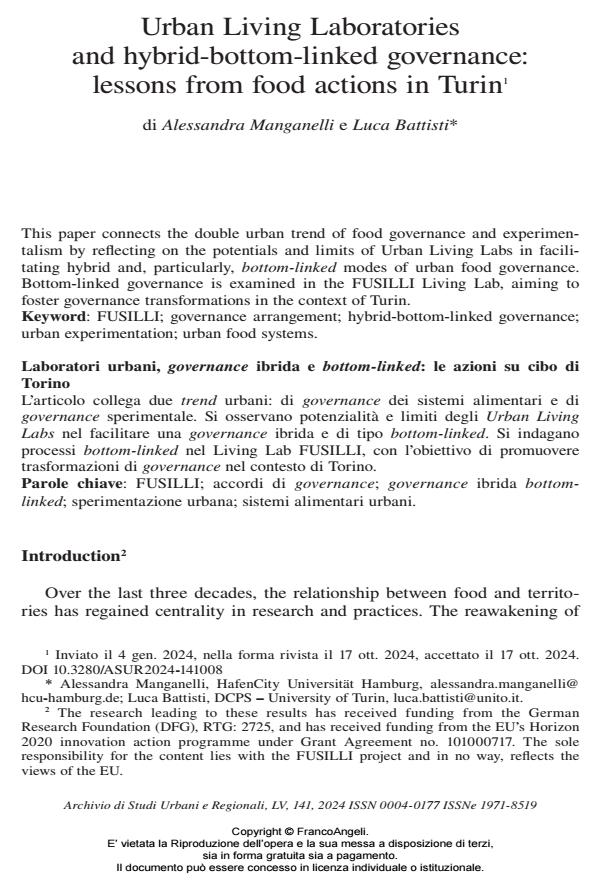Laboratori urbani, governance ibrida e bottom-linked: le azioni su cibo di Torino
Journal title ARCHIVIO DI STUDI URBANI E REGIONALI
Author/s Alessandra Manganelli , Luca Battisti
Publishing Year 2025 Issue 2024/141
Language English Pages 25 P. 149-173 File size 303 KB
DOI 10.3280/ASUR2024-141008
DOI is like a bar code for intellectual property: to have more infomation
click here
Below, you can see the article first page
If you want to buy this article in PDF format, you can do it, following the instructions to buy download credits

FrancoAngeli is member of Publishers International Linking Association, Inc (PILA), a not-for-profit association which run the CrossRef service enabling links to and from online scholarly content.
This paper connects the double urban trend of food governance and experimentalism by reflecting on the potentials and limits of Urban Living Labs in facilitating hybrid and, particularly, bottom-linked modes of urban food governance. Bottom-linked governance is examined in the FUSILLI Living Lab, aiming to foster governance transformations in the context of Turin.
Keywords: FUSILLI; governance arrangement; hybrid-bottom-linked governance; urban experimentation; urban food systems.
- Innovating in food systems: challenges and opportunities in urban governance for sustainable transition Filipe Rocha, Sara Moreno Pires, in Urban Governance /2025 pp.466
DOI: 10.1016/j.ugj.2025.10.004
Alessandra Manganelli , Luca Battisti, Urban Living Laboratories and hybrid-bottom-linked governance: lessons from food actions in Turin in "ARCHIVIO DI STUDI URBANI E REGIONALI" 141/2024, pp 149-173, DOI: 10.3280/ASUR2024-141008